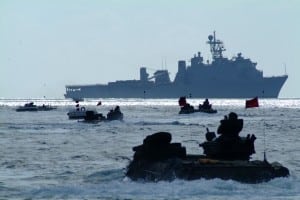
By the end of next week the Marine Corps should have enough amphibious combat vehicle prototypes from two competing companies to support the program’s aggressive testing schedule.On Tuesday the service received four amphibious combat vehicle (ACV) prototypes from Science Applications International Corp. [SAIC], bringing that company’s total to six test vehicles delivered, according to Marine Corps Land Systems Program Executive Officer John Garner. “Both contractors are delivering,” Garner told the Senate Armed Services subcommittee on seapower during a June 6 hearing…

 By
By 










